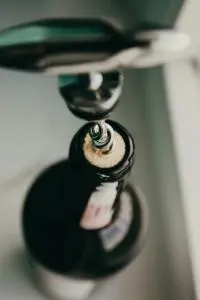A made-to-measure cellar
All the keys to storing your wine properly
Do you want to build up a cellar with Loire wines? We'll give you all the keys you need to store your wine properly and set up your future cellar.
How do I store a small quantity of wine at home?
Storing a case or two at home is possible for a short time. Room temperature won't harm the wine, but keep it in a fairly cool place, away from light.
You can leave the bottles in their cardboard boxes, or protect them from light by wrapping them in aluminum foil.
How do you store your bottles in your cellar?
Immediately remove the bottles from their cartons. Prolonged contact with the cartons could give your bottles a bad taste.
Bottles lying down or standing up? Wine bottles should be stored in a horizontal position so that the cork stays in contact with the wine and doesn't dry out.
Concerning the choice of wine cabinet: Various brands offer wine cabinets to suit different needs and budgets. Their storage capacity can vary from 50 to 500 bottles. It's advisable to take bottles out - especially mature wines - a few days before serving them, to avoid having closed, hard wines.
No complex to build up your cellar
Your wine cellar is your wine cellar! You don't need to be an expert oenologist to enjoy building up your wine cellar, or to melt your savings for a bottle.
The idea is to'identify your tastes, and to do this get advice from a wine merchantand even better from a winemaker at the estate. It's the ideal way to fill your cellar. You can taste and be sure of your choice, and benefit from a lower price than in the distribution channels.

How to design your wine cellar?
To evolve normally, wine must be stored in precise conditions. The ideal cellar is rare, but a few small adjustments can help create the right conditions for proper storage:
A good cellar should be ventilated in order to prevent the appearance of mold, but not excessively so in order to prevent temperature variations.
It must be shaded because too bright a light alters the wine.
A cellar must be clean and must never contain odorous products or materials likely to ferment. Don't store onions or your DIY products in your wine cellar!
The ideal temperature should be between 9 and 14°. Install a thermometer, and you'll be able to check temperature fluctuations and make any necessary changes to ensure excellent preservation of your wine.
Heat shocks should be avoided (passage of heating pipes, etc.).
The hygrometric control of your cellar proves just as important as that of temperature. The ideal level of humidity in the air should be70% to 80%, which can be measured by installing a hygrometer. An earthen floor, or a good layer of gravel or sand spread over the floor, provides excellent insulation. If the area is too dry, you can moisten it with a basin of water containing charcoal. It's better to have too much humidity than too dry air, and maintain good ventilation.
Which Loire wines to include in your cellar?
The quality of a cellar is not always linked to the size of the budget devoted to it, but rather to the adventurous spirit of the wine lover. A good wine cellar should cater for all situations.
To build up your cellar, it's important above allto analyze your consumption:
What are your consumption habits?
What are your preferences?
What qualities do you look for in a wine (robust, tannic, fruity...)?
With what flavors do you like to pair them?
On what occasions do you eat them?
Bref, think about it!
Renew, enrich your assortment to always keep a minimum available for every circumstance.
The palette of Loire Wines is unique: at every moment, for every occasion, you'll find the wine you need.
In your cellar, always have on hand, for example:
Authful wines like touraine, muscadet, saumur-champigny or st-nicolas-de-bourgueil: simple, straightforward wines with a good liveliness that aren't too high, a white, a red, well-born, that represent the terroir.
The wines that rhyme with conviviality like cabernet d'anjou, anjou rouge, touraine-oisly or rosé-de-loire: look for freshness in both temperature and taste. Choose wines that are lively, light, delicate but straightforward, and best served chilled.
Structured wines such as savennières, anjou-blanc or chinon: it's not a question of looking for rare and expensive wines, but greedy, elegant, dashing wines from spring cuvées to powerful cuvées for laying down.
Gastronomic winessuch as crémant-de-loire, saumur-brut, vouvray or a cru communal du muscadet sèvre-et-maine sur Lie: great bottles suitably aged, saved for such occasions, or wines with delicate mousse, strings of fine bubbles that draw their joie de vivre from their freshness.
To remember!
Good storage conditions don't require a big layout
A wine cabinet does the trick in small spaces!
Ventilated, dark and just the right amount of humidity are the prerequisites for a wine cellar
The ideal temperature: between 9 and 14 degrees
The ideal humidity level: 70 to 80%
The "right" wine cellar is one that suits your taste and is eclectic enough to diversify food and wine pairings and consumption moments!
Loire Wines wishes you happy wine tasting!

